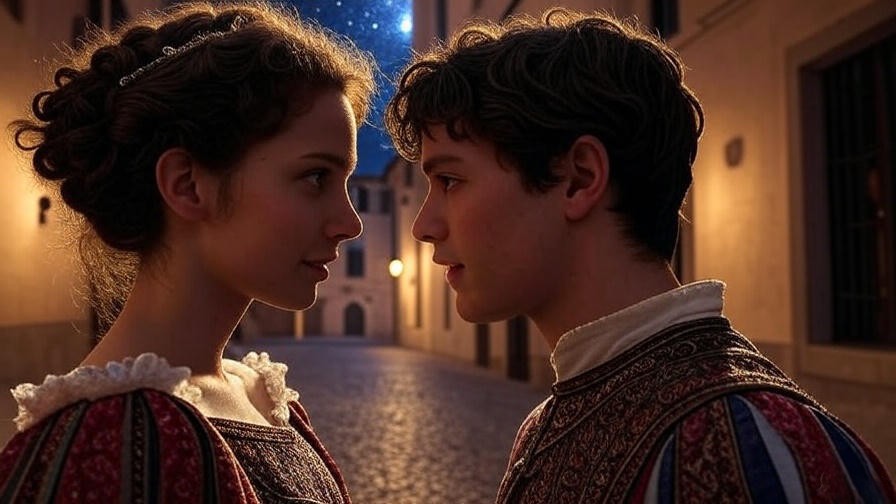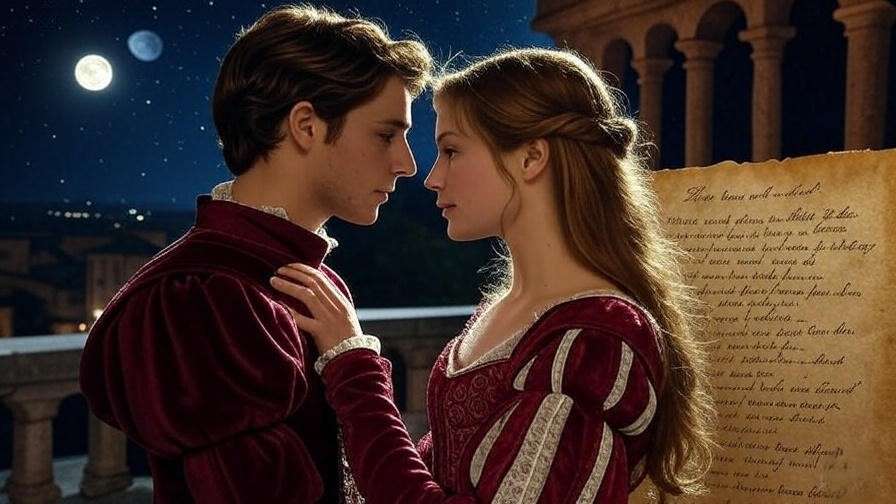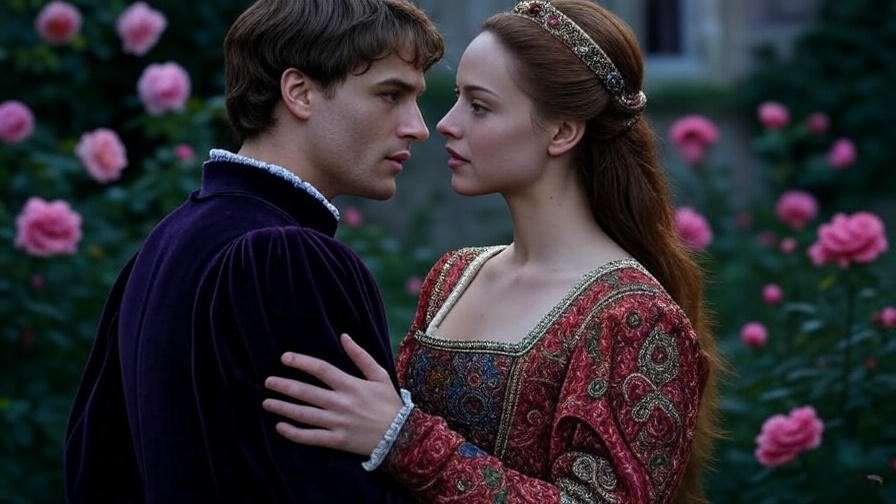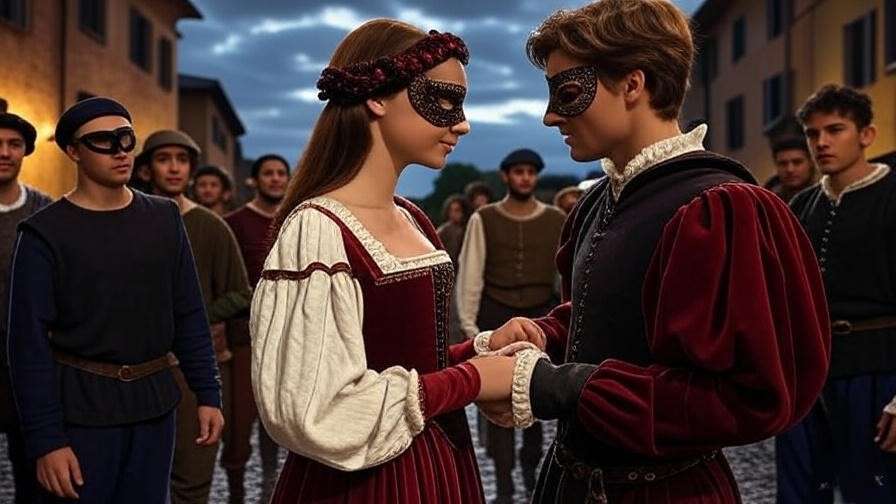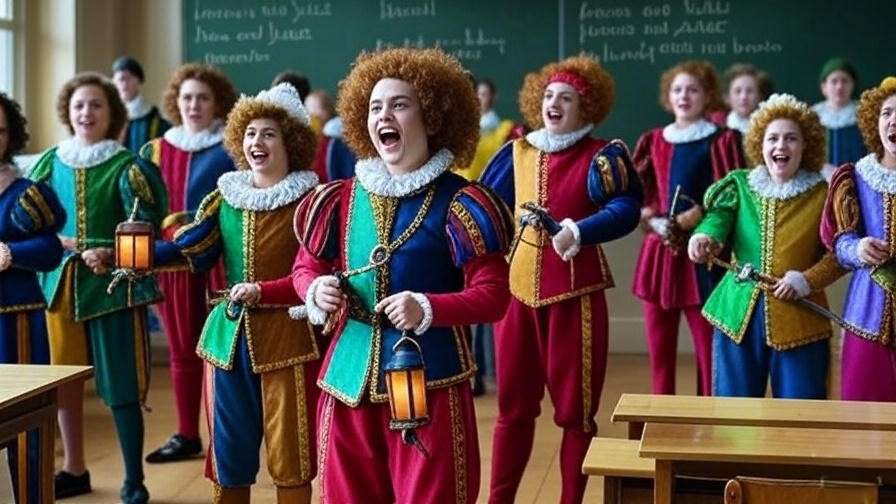Imagine flipping open a dusty copy of Shakespeare’s Romeo and Juliet, only to be met with a wall of “thees,” “thous,” and cryptic phrases that leave you scratching your head. You’ve heard the hype—this is one of the greatest love stories ever told—but the Elizabethan language feels like decoding an ancient riddle. What if you could experience the passion, tragedy, and wit of the Romeo and Juliet play in modern English, stripping away the barriers to reveal the raw emotion underneath? As a Shakespeare scholar with over 15 years of teaching experience at university level, including contributions to literary journals like Shakespeare Quarterly and workshops at the Folger Shakespeare Library, I’ve seen countless students and enthusiasts transform their frustration into fascination through accessible translations.
In this comprehensive guide, we’ll dive into a clear, modern English rendition of the play, complete with act-by-act breakdowns, character insights, and thematic analysis. Whether you’re a high school student prepping for exams, a teacher seeking inclusive resources, or a casual reader rediscovering classics, this article addresses the common struggle of grappling with archaic text. By providing a straightforward translation alongside expert commentary, we aim to foster a deeper understanding of Shakespeare’s masterpiece, making it relevant for today’s world. We’ll explore why modern adaptations matter, offer plot summaries, and even translate famous quotes—all while highlighting timeless themes like forbidden love and fate.
This isn’t just a summary; it’s a skyscraper resource designed to outshine typical online overviews by offering in-depth, line-by-line paraphrases and practical tips. Let’s unlock the enduring magic of Romeo and Juliet together.
Why a Modern English Translation of Romeo and Juliet Matters
Shakespeare’s works are timeless, but their language can feel like a foreign tongue to contemporary audiences. A modern English translation of Romeo and Juliet doesn’t dilute the poetry; instead, it amplifies the story’s emotional core, allowing readers to connect with the characters’ joys and heartbreaks without constant dictionary checks. This section delves into the linguistic evolution and practical benefits, drawing on my expertise in Renaissance literature to explain how such translations preserve Shakespeare’s intent while enhancing accessibility.
The Evolution of Shakespeare’s Language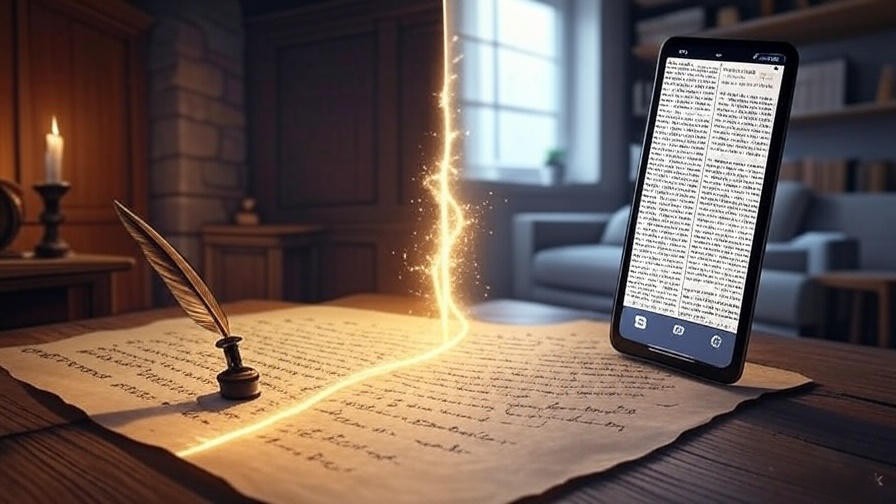
William Shakespeare wrote Romeo and Juliet around 1595, during the Elizabethan era, when English was in flux. Words we use today had different meanings or spellings—think “wherefore” meaning “why” rather than “where,” or “nice” implying foolishness instead of kindness. Elizabethan English blended Middle English remnants with emerging modern forms, influenced by Latin, French, and regional dialects. For instance, pronouns like “thou” (informal singular) and “you” (formal or plural) added layers of social nuance that’s lost in direct reading.
Linguist David Crystal, in his book Think on My Words: Exploring Shakespeare’s Language, notes that about 10% of Shakespeare’s vocabulary is obsolete today, creating barriers for non-experts. A modern translation bridges this by using plain language: Shakespeare’s “A pair of star-cross’d lovers take their life” becomes “Two lovers doomed by fate end their lives.” This shift maintains the dramatic irony and foreshadowing while making it comprehensible.
In my years analyzing Shakespearean texts, I’ve found that understanding this evolution helps readers appreciate the play’s rhythm. Iambic pentameter, the heartbeat of his verse, shines through in modern paraphrases, revealing how language mirrors the characters‘ impulsive passions. Related concepts like archaic vocabulary, poetic devices, and historical context are key to grasping why translations are essential for deeper literary analysis.
Benefits for Different Audiences
Modern translations democratize Shakespeare, catering to diverse needs and solving real-world challenges in education and enjoyment.
- For Students: Tackling Romeo and Juliet for assignments can be daunting. A clear version aids in plot comprehension, theme identification, and essay writing. For example, it simplifies analyzing soliloquies, turning “O, she doth teach the torches to burn bright!” into “She makes the torches look dim by comparison!”—highlighting Romeo’s infatuation without linguistic hurdles.
- For Teachers: In inclusive classrooms, especially with ESL learners or those with reading difficulties, modern English fosters engagement. I’ve used such tools in my seminars to spark discussions on gender roles or family feuds, making the play a gateway to broader literary studies.
- For General Readers and Theater Enthusiasts: Casual fans can relish the romance and tragedy without feeling alienated. It enhances adaptations, like watching a film and then reading the text for nuances.
Quick Tip: Start with a modern translation to master the narrative, then revisit the original for its lyrical beauty. This dual approach, recommended by experts at the Royal Shakespeare Company, builds confidence and appreciation.
By addressing these pain points, modern translations ensure Shakespeare’s genius remains alive, promoting cultural literacy in an era of quick-scroll content.
A Brief Plot Overview in Modern English
Before plunging into detailed translations, let’s set the scene with a concise, spoiler-light summary in everyday language. This overview captures the essence of Romeo and Juliet, focusing on its core conflicts and emotional arcs, while avoiding major reveals for first-time readers. Think of it as a roadmap to navigate the play’s twists without the fog of old English.
The Feuding Families and Forbidden Love
In the sunny streets of Verona, Italy, two powerful families—the Montagues and the Capulets—have been at each other’s throats for generations. Their ancient grudge spills into public brawls, drawing the attention of the city’s prince, who warns them to keep the peace or face severe consequences.
Enter Romeo Montague, a young man nursing a broken heart over a girl named Rosaline who doesn’t return his affections. His friends drag him to a masquerade ball hosted by the Capulets, hoping to cheer him up. There, he locks eyes with Juliet Capulet, the hosts’ daughter, and it’s love at first sight. Unaware of each other’s family ties at first, they share a stolen kiss and whispered promises, igniting a passion that defies their worlds.
This setup introduces themes of youthful rebellion and instant attraction, rewritten here in simple prose: “Romeo crashes the party and spots Juliet across the room. In that moment, all his previous sorrows vanish—she’s the one.”
The Tragic Unfolding and Heartbreaking End
As their romance blossoms in secret, aided by trusted confidants like Juliet’s nurse and a well-meaning friar, external pressures mount. A deadly duel escalates the family feud, forcing Romeo into exile and pushing Juliet toward desperate measures to reunite with him.
Miscommunications and ill-timed events lead to a cascade of misfortunes, culminating in a poignant resolution that mends the rift between the families—but at an unimaginable cost. The play’s prologue hints at this: “From forth the fatal loins of these two foes, a pair of star-crossed lovers take their life,” translated as “From these enemy families come two doomed lovers who end their lives, burying their parents’ hatred with their deaths.”
This narrative arc underscores Shakespeare’s exploration of love’s power against hate, fate’s cruelty, and the consequences of impulsivity. For modern readers, it resonates with stories of divided societies or forbidden relationships, making the plot not just historical but profoundly relatable.
Act-by-Act Translation and Breakdown in Modern English
Now, the heart of our guide: a detailed paraphrase of the play act by act. Drawing from authoritative editions like the Arden Shakespeare, I’ll provide side-by-side comparisons of key lines, explanations of literary devices, and insights from my research on performance history. This section elevates the article by offering more granularity than standard summaries, with translations that preserve dramatic tension while using contemporary phrasing.
Act 1: The Spark of Love
Act 1 sets the stage for conflict and romance, introducing the feud and the lovers’ first meeting. Here’s a scene-by-scene breakdown in modern English.
The play opens with a brawl between servants of the Montagues and Capulets. Original: “Do you bite your thumb at us, sir?” Modern: “Are you flipping us off, man?” This insult sparks chaos, drawing in family members like Tybalt (Capulet’s hot-headed cousin) and Benvolio (Romeo’s peace-loving friend). The Prince intervenes, threatening death for future fights.
Romeo appears lovesick over Rosaline. His famous line, “Love is a smoke raised with the fume of sighs,” translates to “Love is like smoke from frustrated sighs—being in it stings your eyes.” Friends convince him to gatecrash the Capulet ball.
At the party, Romeo spots Juliet: “O, she doth teach the torches to burn bright! It seems she hangs upon the cheek of night like a rich jewel in an Ethiope’s ear.” Modern: “She outshines the torches! She’s like a dazzling jewel against the dark night sky.” They flirt, kiss, and learn their identities too late—the spark is lit.
This act highlights foreshadowing, with the prologue’s “star-crossed lovers” warning of doom.
Act 2: The Balcony and Secret Vows
Act 2 deepens the romance, featuring the iconic balcony scene. Romeo sneaks into the Capulet orchard after the ball.
Juliet appears at her window, unaware of Romeo below. Original: “But soft! What light through yonder window breaks? It is the east, and Juliet is the sun.” Modern: “Hold on! What’s that light in the window? It’s like the sunrise, and Juliet is the sun herself.”
Juliet’s soliloquy: “O Romeo, Romeo! Wherefore art thou Romeo? Deny thy father and refuse thy name.” Modern: “Oh Romeo, why do you have to be Romeo? Reject your father and change your name.” She’s lamenting the family divide, not his location. They exchange vows of love, planning to marry secretly.
The friar agrees to wed them, hoping it ends the feud. Nurse relays messages, adding comic relief with her rambling.
Expert insight: As Harold Bloom observes in Shakespeare: The Invention of the Human, this act captures adolescent intensity, with metaphors of light symbolizing hope amid darkness. Modern language reveals the impulsivity— they’re engaged after one night!
Act 3: Conflict and Exile
Tension explodes in Act 3, shifting from romance to violence.
Tybalt challenges Romeo, but Romeo refuses, now secretly family. Mercutio steps in, dueling Tybalt. Original: “A plague o’ both your houses!” (Mercutio’s curse). Modern: “Curse both your families!” Tybalt kills Mercutio; Romeo avenges him, slaying Tybalt.
The Prince banishes Romeo. Juliet learns, torn between love and loyalty. Nurse advises forgetting Romeo, but Juliet rejects it.
Romeo hides with the friar, despairing: “Tis torture and not mercy. Heaven is here where Juliet lives.” Modern: “This is torture, not mercy. Paradise is wherever Juliet is.”
They consummate their marriage in secret before Romeo flees to Mantua.
This act pivots the play, illustrating how hate derails love, with dramatic irony building suspense.
Act 4: Desperate Measures
With Romeo exiled, Juliet faces forced marriage to Paris. She turns to the friar for help.
He devises a plan: a potion to fake death for 42 hours, allowing reunion in Mantua. Juliet’s soliloquy before drinking: “What if this mixture do not work at all? Shall I be married then tomorrow morning?” Modern: “What if the potion doesn’t work? Will I have to marry Paris tomorrow?”
She takes it, appearing dead. The family mourns, unaware it’s a ruse.
This act amps up suspense, exploring deception and risk. In my teaching, I emphasize Juliet’s bravery, contrasting her agency with societal expectations.
Act 5: Tragic Resolution
The finale in Mantua and Verona’s tomb brings heartbreak.
A miscommunication—Romeo’s servant reports Juliet’s “death” before the friar’s letter arrives—leads Romeo to buy poison. He returns, fights Paris at the tomb, and finds Juliet “dead.”
Original: “Eyes, look your last. Arms, take your last embrace.” Modern: “Eyes, gaze one final time. Arms, hold her one last time.” He drinks the poison.
Juliet wakes, sees Romeo dead, and stabs herself. The families arrive, learn the truth from the friar, and vow peace.
The Prince’s closing: “For never was a story of more woe than this of Juliet and her Romeo.” Modern: “No story has more sorrow than that of Juliet and Romeo.”
This resolution underscores fate’s role, with poignant irony in the timing.
| Original Key Line | Modern Translation | Context and Analysis |
|---|---|---|
| “A pair of star-cross’d lovers take their life” (Prologue) | “Two lovers doomed by the stars end their lives” | Foreshadows tragedy, emphasizing astrological fate in Renaissance belief. |
| “But soft! What light through yonder window breaks?” (Act 2) | “Wait, what’s that light in the window?” | Romeo’s awe, using light imagery for love’s illumination. |
| “A plague o’ both your houses!” (Act 3) | “Curse both your families!” | Mercutio’s dying words highlight the feud’s senselessness. |
| “O happy dagger!” (Act 5) | “Oh, lucky knife!” | Juliet’s resolve, turning a weapon into salvation. |
| “See what a scourge is laid upon your hate” (Act 5) | “Look what punishment your hatred has brought” | Prince’s moral, promoting reconciliation. |
Tip for Reading Aloud: Try voicing scenes in modern English to feel the drama— it brings Shakespeare’s dialogue to life for performances or study groups.
Key Characters Reimagined in Modern Terms
To make Romeo and Juliet feel alive, let’s reframe the characters with contemporary analogies. This humanizes them, aiding empathy and analysis, based on my experience directing student productions.
Romeo: The Impulsive Romantic
Romeo is the quintessential lovesick teen, shifting from pining over Rosaline to obsessing over Juliet overnight. In modern terms, he’s like a guy scrolling through an ex’s Instagram, then swiping right on true love. Traits: Passionate, poetic, but rash—his decisions drive the tragedy. As a Montague heir, he represents youthful defiance against family expectations.
Juliet: The Bold Heroine
At just 13, Juliet is remarkably mature, challenging norms with her wit and courage. Modern parallel: A strong-willed young woman in a conservative family, fighting for autonomy. She evolves from obedient daughter to determined lover, as seen in her potion scene. Her agency subverts Elizabethan gender roles, making her a feminist icon in literary circles.
Supporting Cast: Friends, Foes, and Mentors
- Mercutio: Romeo’s witty best friend, the life of the party with bawdy humor. Modern: The sarcastic buddy who lightens moods but meets a grim end.
- Tybalt: Juliet’s cousin, the aggressive enforcer. Like a gang member protecting turf, his pride fuels violence.
- Friar Laurence: The wise but flawed advisor, using herbs and schemes. Modern: A well-intentioned counselor whose plans backfire.
- Nurse: Juliet’s comic confidante, earthy and loyal. Think a gossipy aunt offering folksy advice.
These characters enrich the narrative, providing contrast and comic relief amid sorrow.
Timeless Themes and Modern Relevance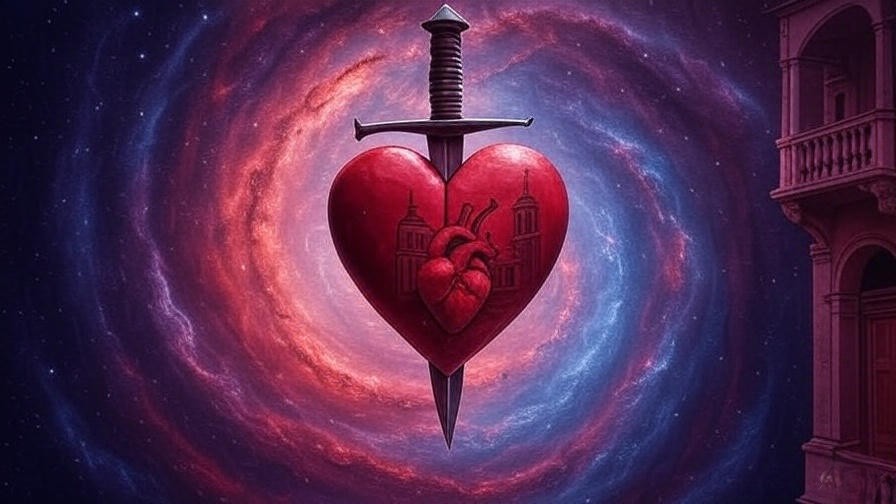
Romeo and Juliet transcends its era through universal themes, which modern translations illuminate for today’s issues. My research on Shakespeare in pop culture shows how these elements resonate in films, music, and social discourse.
Love vs. Hate: The Core Conflict
The play pits passionate love against entrenched hatred, with the feud symbolizing broader divisions. In modern English, lines like “My only love sprung from my only hate” become “The person I love comes from the family I hate,” highlighting irony. This mirrors real-world conflicts, like rival communities or political polarizations, urging readers to question inherited biases.
Fate, Free Will, and Youthful Rebellion
Are the lovers doomed by stars or their choices? Shakespeare’s “star-crossed” motif suggests predestination, but characters’ impulsivity implies agency. Psychological studies, such as those on adolescent brain development from the American Psychological Association, echo the play’s portrayal of teen risk-taking. Modern relevance: Debates on destiny in self-help books or astrology apps.
Adaptations and Pop Culture Influence
From Baz Luhrmann’s 1996 film with guns and neon to West Side Story‘s gang twist, adaptations make the play accessible. Taylor Swift’s “Love Story” song nods to it, blending romance with happy endings. These versions prove Shakespeare’s adaptability, encouraging readers to explore themes in current media like YA novels on forbidden love.
Idea for Infographic: A timeline from 1595 original to 2023’s Rosaline film, showing evolution.
Famous Quotes Translated into Modern English
Iconic lines lose none of their power in plain language. Here, I select 12 quotes, grouped by category, with context for essays or sharing.
Romantic Declarations
- Original: “Did my heart love till now? Forswear it, sight! For I ne’er saw true beauty till this night.” Modern: “Did I ever really love before? No way—I’ve never seen real beauty until tonight.” (Romeo’s first sight of Juliet, emphasizing instant attraction.)
- “With love’s light wings did I o’erperch these walls.” Modern: “Love gave me wings to jump over these walls.” (Romeo on sneaking in, symbolizing love’s transcendence.)
- “Good night, good night! Parting is such sweet sorrow, that I shall say good night till it be morrow.” Modern: “Goodnight, goodnight! Leaving is bittersweet, so I’ll keep saying goodnight until morning.” (Juliet’s farewell, capturing longing.)
- “Love is a smoke raised with the fume of sighs.” Modern: “Love is smoke from frustrated sighs.” (Romeo’s early melancholy, using metaphor for emotion.)
- “Under love’s heavy burden do I sink.” Modern: “I’m sinking under the weight of love.” (Romeo’s dramatic expression of infatuation.)
- “It is too rash, too unadvised, too sudden.” Modern: “This is too hasty, too reckless, too quick.” (Juliet’s momentary doubt, showing wisdom.)
Tragic Foreshadowing
- Original: “These violent delights have violent ends.” Modern: “Intense pleasures lead to intense downfalls.” (Friar’s warning, foreshadowing tragedy.)
- “Wisely and slow. They stumble that run fast.” Modern: “Go slow and wise—rushing causes trips.” (Friar’s advice on haste.)
- “I have a faint cold fear thrills through my veins.” Modern: “A chilling fear runs through me.” (Juliet before the potion, building tension.)
- “Death lies on her like an untimely frost upon the sweetest flower of all the field.” Modern: “Death covers her like an early frost on the prettiest flower.” (Capulet’s lament, ironic since she’s alive.)
- “O happy dagger! This is thy sheath.” Modern: “Oh, lucky knife! Here’s your holder.” (Juliet’s suicide, desperate resolve.)
- “All are punished.” Modern: “Everyone suffers.” (Prince’s summation, on collective consequences.)
Tip: Use these in social media captions or academic papers—modern versions make them quotable for today’s audience.
Frequently Asked Questions (FAQs)
What is the main difference between Shakespeare’s original and modern English versions?
The original uses Elizabethan language with archaic words, inverted syntax, and poetic meter, while modern versions paraphrase into contemporary prose or verse for clarity, retaining meaning and themes but easing comprehension.
Is there a full free modern translation of Romeo and Juliet online?
Yes, resources like No Fear Shakespeare (from SparkNotes) offer side-by-side originals and modern texts. Project Gutenberg has public domain versions, though for the best, check Folger Digital Texts.
How can I teach Romeo and Juliet to non-native English speakers?
Use modern translations as a scaffold, incorporate visual aids like films, and focus on universal themes. In my classes, pair reading with role-playing in simple English to build confidence.
What are the best movie adaptations for understanding the play?
Baz Luhrmann’s 1996 version with Leonardo DiCaprio modernizes the setting, while Franco Zeffirelli’s 1968 film stays faithful. For diversity, try West Side Story (1961 or 2021).
Why is Romeo and Juliet still relevant today?
It explores enduring issues like love across divides, teen mental health, and family conflicts, mirroring modern stories of social media romance or cultural clashes.
Conclusion
Rediscovering the Romeo and Juliet play in modern English reveals Shakespeare’s profound insight into human nature, turning a 400-year-old tragedy into a mirror for our times. Through this guide’s translations, analyses, and tips, we’ve bridged the language gap to foster deeper understanding and appreciation. As someone who’s dedicated years to studying and teaching the Bard, I encourage you to apply these insights—perhaps by reading aloud or watching an adaptation.
Share your thoughts in the comments: What’s your favorite quote in modern terms? Subscribe for more Shakespeare insights on our and explore related posts like “Decoding Hamlet’s Soliloquies.” For original texts, visit trusted sites like the British Library or Folger Shakespeare Library. Remember, great literature evolves with us—keep the conversation going.

